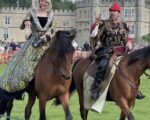
-
The Amazing Queens Joust at Leeds Castle in Kent

-
#OTD in Tudor history – 31 May

On this day in Tudor history, 31st May, the matriarch of the Tudor dynasty, Lady Margaret Beaufort, was born; the Legatine Court, whose purpose was to hear Henry VIII’s case for an annulment of his first marriage, opened at Blackfriars; and Queen Anne Boleyn’s coronation procession took place…
[Read More...] -
#OTD in Tudor history – 30 May

On this day in Tudor history, 18 men were created Knights of the Bath during Anne Boleyn’s coronation celebrations; Henry VIII married Jane Seymour at Whitehall; and playwright and poet Christopher Marlowe was stabbed to death…
[Read More...] -
#OTD in Tudor history – 29 May
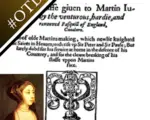
On this day in Tudor history, 29th May, Queen Anne Boleyn’s coronation celebrations began with a huge river procession on the Thames, and religious controversialist John Penry was hanged after being linked to the Marprelate religious tracts…
[Read More...] -
#OTD in Tudor history – 28 May

On this day in Tudor history, 28th May, Archbishop Cranmer, proclaimed the validity of Henry VIII’s marriage to Anne Boleyn; three Catholic priests were executed for a plot that may not have been real; and the Spanish Armada set sail from Lisbon in Portugal bound for the Spanish Netherlands…
[Read More...] -
#OTD in Tudor history – 27 May

On this day in Tudor history, 27th May, Cardinal Pole sent Henry VIII a copy of his work, and in it, he criticised the king’s annulment; there were celebrations for the ‘quickening’ of Queen Jane Seymour’s baby; and Cardinal Pole’s mother, Margaret Pole, Countess of Salisbury, was executed…
[Read More...] -
#OTD in Tudor history – 26 May

On this day in Tudor history, 26th May, Henry VIII and Charles V met at Dover Castle; Henry VIII’s eldest daughter, Mary, wrote to Cromwell asking him to intercede with her father on her behalf; and Barbara Sidney (née Gamage), Countess of Leicester, was buried at Penshurst…
[Read More...] -
#OTD in Tudor history – 25 May

On this day in Tudor history, an earthquake shook Croydon and neighbouring villages, and Lady Jane Grey married Lord Guildford Dudley, son of John Dudley, Duke of Northumberland, in a triple wedding at Durham Place…
[Read More...] -
#OTD in Tudor history – 24 May

On this day in Tudor history, 24th May, Anne Askew and her husband were ordered to appear in front of the king’s council; a “monstrous child” was born in Chichester; and Robert Cecil, 1st Earl of Salisbury and Elizabeth I’s former Secretary of State, died…
[Read More...] -
Witness Dramatic Clash of Lances as Leeds Castle Hosts The Queen’s Joust
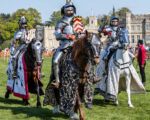
-
The Men Behind the Throne – Zoom Discussion on Archbishop Thomas Cranmer
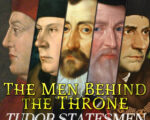
As part of my forthcoming event, The Men Behind the Throne: Tudor Statesmen, I’m running a zoom video discussion on Archbishop Thomas Cranmer this Sunday. I love doing these informal discussions as they’re a great way to get to know each other before the event and an hour of Tudor talk with like-minded people is bliss.
There are still places left on The Men Behind the Throne, which is a completely online event and interactive too, and there’s an early bird discount until 31st May.
[Read More...] -
#OTD in Tudor history – 23 May

On this day in Tudor history, 23rd May, Henry Grey was finally installed as a Knight of the Garter; Elizabeth (future Elizabeth I) arrived as Woodstock, where she was to be kept under house arrest; and Henry VIII’s first marriage was finally annulled…
[Read More...] -
#OTD in Tudor history – 22 May

On This day in Tudor history, 22nd May, Edward Seymour, brother of Queen Jane Seymour, was sworn in as a privy councillor; Franciscan friar John Forest was burnt at the stake; and four men, including the Earls of Hertford and Surrey, were installed as Knights of the Garter…
[Read More...] -
#OTD in Tudor history – 21 May

On this day in Tudor history, 21st May, courtier, magnate and soldier Thomas Howard, 2nd Duke of Norfolk, died; Philip II of Spain, consort of Mary I, was born in Valladolid, Spain; and Bible translator William Tyndale was arrested…
[Read More...] -
#OTD in Tudor history – 20 May

On this day in Tudor history, 20th May, the pope made the imprisoned Bishop John Fisher a cardinal; Henry VIII and Jane Seymour became betrothed; and Matthew Hamont was burnt at the stake for heresy in Norwich…
[Read More...] -
#OTD in Tudor history – 19 May

On this day in Tudor history, Queen Anne Boleyn was executed at the Tower of London; Henry VIII was issued a dispensation to marry wife number 3, the future Elizabeth I was released from the Tower of London into house arrest; and it’s the Feast of St Dunstan…
[Read More...] -
#OTD in Tudor history – 18 May

On this day in Tudor history, 18th May, Catherine Woodville, Duchess of Buckingham and Bedford, sister of Elizabeth Woodville, died, and scholar William Thomas was executed for treason after being implicated in Wyatt’s Rebellion…
[Read More...] -
#OTD in Tudor history – 17 May

On this day in Tudor history, 17th May, Edward Stafford, Duke of Buckingham, was executed for treason; five men were executed as traitors for their involvement with Queen Anne Boleyn; and Elizabethan spy Anthony Bacon was buried…
[Read More...] -
#OTD in Tudor history – 16 May

On this day in Tudor history, 16th May, Sir Thomas More resigned as Lord Chancellor; Archbishop Cranmer visited an imprisoned Queen Anne Boleyn; Mary, Queen of Scots, landed on English soil; and William Adams, the inspiration for Shōgun’s John Blackthrone, died…
[Read More...] -
#OTD in Tudor history – 15 May

On this day in Tudor history, Queen Anne Boleyn and her brother, George Boleyn, Lord Rochford, were tried for high treason; Baron Darcy and Baron Hussey were tried for treason; and Mary, Queen of Scots married for a third time…
[Read More...] -
The Men Behind the Throne: Tudor Statesmen – Online Event – Register Now
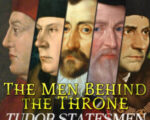
I’ve just opened registration for my forthcoming online event “The Men Behind the Throne: Tudor Statesmen”! There’s an early bird discount until 31 May and our very first zoom call discussion, which is on Thomas Cromwell, is this Friday, 17th May!
In my interactive and completely online 11-day event, which starts properly on 30th June, I’ll be joined by historians Dr Joanne Paul, Caroline Angus, Melita Thomas, Phil Roberts and Dr Hannah Coates. We’ll be delving into the captivating lives of the Tudor statesmen who shaped England’s history alongside iconic rulers like Henry VII, Henry VIII, Edward VI, Mary I, and Elizabeth I.
Through video talks and zoom Q&A sessions with speakers – where you’ll be video chatting with the historian! – you’ll gain a fresh understanding of the roles and contributions of prominent Tudor statesmen, and insights into the political landscape of Tudor England, including court intrigues, power struggles, and the dynamics between monarchs and their advisors.
[Read More...] -
#OTD in Tudor history – 14 May

On this day in Tudor history, Henry VIII was suffering badly with his legs; the Creeping Parliament was held by James VI’s regent, the Earl of Lennox; and Lady Helena Gorges (née Snakenborg) was buried in Salisbury Cathedral…
[Read More...] -
#OTD in Tudor history – 13 May

On this day in Tudor history, 13th May, Mary Tudor, dowager Queen of France, married Charles Brandon, Duke of Suffolk; Henry Percy denied a precontract with Queen Anne Boleyn; and Mary, Queen of Scots’ forces were defeated in battle…
[Read More...] -
#OTD in Tudor history – 12 May

On this day in Tudor history, Cardinal Wolsey presided over a book burning; four men were tried for sleeping with and plotting with Queen Anne Boleyn; Baron Hussey was charged with treason; and a friar refused to recant his allegiance to Rome…
[Read More...] -
#OTD in Tudor history – 11 May
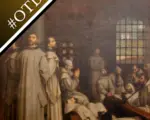
On this day in Tudor history, 11th May, Henry VIII flung accusations at the clergy; the Grand Jury of Kent met in the fall of Anne Boleyn; two Carthusian monks were hanged in chains; and royal physician Dr Thomas Wendy died…
[Read More...] -
The Intriguing Tradition of Proxy Weddings
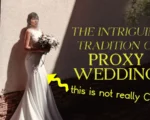
Join me as I delve into the fascinating world of proxy weddings, from historical royal unions to modern-day ceremonies. Discover the story behind Marie de Guise and King James V of Scotland’s proxy wedding, a common practice for diplomatic unions among European ruling houses.
Learn about notable proxy marriages throughout history, including Catherine of Aragon and Arthur Tudor, Margaret Tudor and King James IV of Scotland, and Princess Mary Tudor and King Louis XII of France. Uncover the unique customs and rituals associated with these proxy weddings, from symbolic gestures to mock consummations.
[Read More...] -
#OTD in Tudor history – 10 May

On this day in Tudor history, 10th May, a special court met to rule on Henry VIII’s Great Matter; the Grand Jury of Middlesex met to decide on whether Queen Anne Boleyn and five courtiers should be tried; the Duke of Norfolk’s secretary committed suicide; and an expedition to find the Northeast Passage set off…
[Read More...] -
#OTD in Tudor history – 9 May

On this day in Tudor history, 9th May, Henry VII’s remains were taken to St Paul’s Cathedral; James V of Scotland and Marie de Guise were married by proxy; and William Bradford, founder of the Plymouth Colony, died…
[Read More...] -
#OTD in Tudor history – 8 May

On this day in Tudor history, 8th May, herald and chronicler Charles Wriothesley was born; there was war panic in London; and Elizabeth I gave her approval to the Acts of Uniformity and Supremacy…
[Read More...] -
Shardlake – Dissolution by C J Sansom

Tim and I have just finished watching the new series “Shardlake” on Disney+. It’s based on C J Sansom’s historical novel, “Dissolution”, the first of his Shardlake series featuring 16th century lawyer and sleuth Matthew Shardlake.
It’s a series of books we’ve both enjoyed so we thought Tim could share his review of the book and then we’d have an off-the-cuff chat about the series…
[Read More...]
